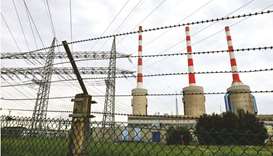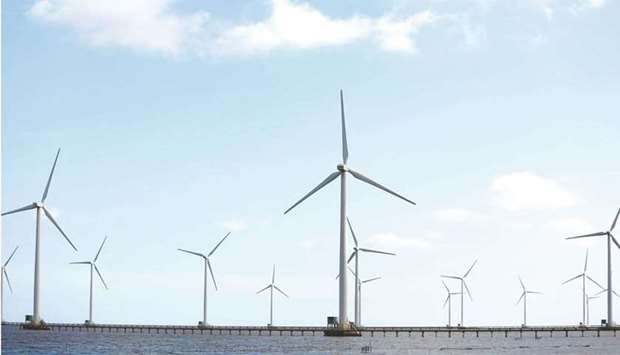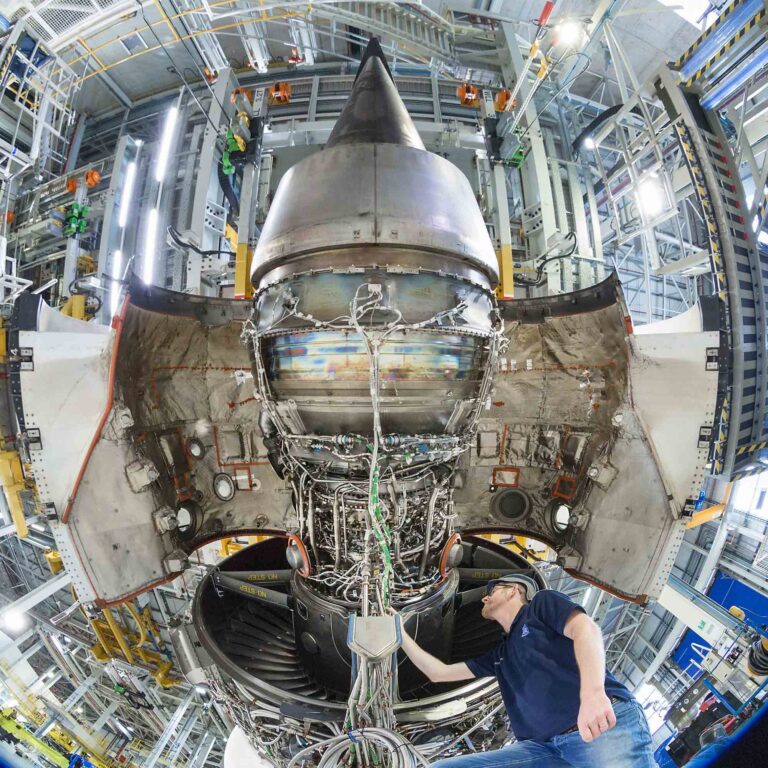Ελλάδα και Τουρκία έχουν τα πάντα να κερδίσουν και τίποτα ή σχετικά λίγα να χάσουν συνεργαζόμενοι σε κάθε ευκαιρία, αλλά ειδικά στην ενέργεια
ΗΕλλάδα και η Τουρκία έχουν μια από τις πιο περίπλοκες σχέσεις του κόσμου. Όλοι γνωρίζουμε την ιστορία, αν και πολλές από τις λεπτομέρειες αμφισβητούνται. Ωστόσο, υπάρχουν ορισμένα αδιαμφισβήτητα γεγονότα. Δύο πρώην μακροχρόνιοι εχθροί συγκεντρώθηκαν ως σύμμαχοι από τον Ψυχρό Πόλεμο, όταν και οι δύο εντάχθηκαν στο ΝΑΤΟ, αλλά γενικά παρέμειναν σε διαφωνίες για έναν μακρύ κατάλογο θεμάτων.
Το βασικό μάθημα από αυτήν την απλή σύνοψη είναι ότι η Ελλάδα και η Τουρκία εντάχθηκαν στην Ατλαντική συμμαχία για τον ίδιο βασικό λόγο: ο καθένας θεωρούσε τη διαμάχη τους ως μια μικρότερη απειλή από αυτήν που έθεσε η Σοβιετική Ένωση, η οποία ήταν δυνητικά υπαρξιακή. Στο τέλος της ημέρας, και παρά τις παλιές δυσαρέσκειες και τις συνεχιζόμενες εντάσεις, οι διαδοχικές κυβερνήσεις – συμπεριλαμβανομένου της χούντας – και των δύο χωρών τήρησαν την ίδια λογική ανάλυση για δεκαετίες.
Και οι δύο εξακολουθούν να είναι μέλη του ΝΑΤΟ, αλλά η σοβιετική απειλή αντικαθίσταται μόνο εν μέρει από μια πολύ πιο αδύναμη Ρωσία. Σε κάποιο βαθμό, αυτό οδήγησε σε επανέναρξη της ελληνοτουρκικής τριβής, ειδικά στα θαλάσσια σύνορά τους στη Μεσόγειο.
Διακυβεύονται πολλά περισσότερα από την υπερηφάνεια ή την επικράτεια
Και αυτή τη φορά, διακυβεύονται πολλά περισσότερα από την υπερηφάνεια ή την επικράτεια. Δεδομένου ότι έχουν ανακαλυφθεί τεράστιες ποσότητες φυσικού αερίου ανοικτής θάλασσας σε πολλά μέρη της Ανατολικής Μεσογείου, η διασυνοριακή διαμάχη μπορεί να περιλαμβάνει πόρους που θα μπορούσαν να προσφέρουν ιστορικά πλεονεκτήματα σε όποιον τα ελέγχει.
Για άλλη μια φορά, ακούγονται σαν λογικοί υπολογισμοί. Αλλά είναι πραγματικά; Θα επιτρέψω στα μεγάλα αποθέματα φυσικού αερίου τα οποία έχουν τη δυνατότητα να βοηθήσουν οποιαδήποτε χώρα να εξασφαλίσει ένα καλύτερο μέλλον για τον λαό της.
Η εξοικονόμηση και τα έσοδα θα επιτρέψουν άνευ προηγουμένου επενδύσεις στην εκπαίδευση, την υγειονομική περίθαλψη, τις μεταφορές και άλλες υποδομές, δημιουργώντας περισσότερες και καλύτερες θέσεις εργασίας και αναγκάζοντας αμέτρητους ανθρώπους από τη φτώχεια. Ακόμη και τα τέλη διαμετακόμισης από τη φιλοξενία ενός διεθνούς αγωγού μπορούν να παρέχουν σημαντικό εισόδημα, και όσο περισσότερο διασχίζει ο αγωγός, τόσο υψηλότερα είναι τα τέλη.
Αλλά θα έλεγα ότι, όπως συνέβη κατά τον Ψυχρό Πόλεμο, τόσο η Ελλάδα όσο και η Τουρκία θα έπρεπε να λάβουν περισσότερο υπόψη τις μεγαλύτερες – στην πραγματικότητα, πολύ μεγαλύτερες – εκτιμήσεις.
Θανάσιμη απειλή
Και όλα αυτά έχουν να κάνουν με την κλιματική αλλαγή. Αυτή η πρόκληση αποτελεί θανάσιμη απειλή, όχι μόνο για τους Έλληνες και τους Τούρκους, αλλά και για τον ίδιο τον ανθρώπινο πολιτισμό. Και σε αντίθεση με τη Σοβιετική Ένωση, αυτή δεν είναι μια πολιτική-στρατιωτική δύναμη που μπορεί να αποφευχθεί, να υποτιμηθεί.
Ούτε μπορούμε να το περιμένουμε και να ελπίζουμε ότι, όπως και η ΕΣΣΔ, η κλιματική αλλαγή θα διαλυθεί από τα δικά της ελαττώματα. Όχι, θα σώσουμε τον πλανήτη μας δουλεύοντας μαζί για να αποκαταστήσουμε τη ζημιά που έχουμε κάνει με την άντληση ατελείωτων ρευμάτων άνθρακα στην ατμόσφαιρα.
Μπορούμε να το κάνουμε μόνο μειώνοντας δραστικά τις εκπομπές και αυτό μπορεί να επιτευχθεί μόνο με τη μετάβαση σε ανανεώσιμες πηγές ενέργειας και καθαρότερα, πιο πράσινα καύσιμα. Και είτε αρέσει είτε όχι, καθώς οι μεγάλες Μεσογειακές δυνάμεις, η Ελλάδα και η Τουρκία έχουν τεράστιους ρόλους να διαδραματίσουν σε αυτήν τη διαδικασία – και ως εκ τούτου τεράστιες ευθύνες. Όπως και στο ΝΑΤΟ, και οι δύο θα αναμένεται να τραβήξουν τα αντίστοιχα βάρη τους.
Ο χρόνος είναι σωστός για μια νέα προσπάθεια
Προηγούμενες απόπειρες συμφιλίωσης ήταν πάντα ελλιπείς ή εκτροχιασμένες, αλλά υπάρχει λόγος να ελπίζουμε ότι ο χρόνος είναι σωστός για μια νέα προσπάθεια και ότι ορισμένοι από τους βασικούς παίκτες βρίσκονται στο σωστό δρόμο.
Η σύνοδος κορυφής του ΝΑΤΟ την περασμένη εβδομάδα, για παράδειγμα, είδε τον πρόεδρο των ΗΠΑ Τζο Μπάιντεν να σημειώνει πολύ διαφορετικές σημειώσεις από τον προκάτοχό του, Ντόναλντ Τραμπ, τονίζοντας τη δυνατότητα της συμμαχίας να επηρεάσει μια ευρεία ποικιλία γεωπολιτικών θεμάτων.
Οι συναντήσεις του στο περιθώριο της συνόδου κορυφής περιελάμβαναν μια συνάντηση με τον Τούρκο ομόλογό του, Ρετζέπ Ταγίπ Ερντογάν, ο οποίος αργότερα δήλωσε ότι άνοιξε μια «νέα εποχή» εποικοδομητικών δεσμών. Εάν αυτό αποδειχθεί αλήθεια και η Άγκυρα θέλει πραγματικά να επισκευάσει τις σχέσεις της με την Ουάσιγκτον, θα μπορούσε να έχει θετικές επιπτώσεις, όχι μόνο για την ελληνοτουρκική συμφιλίωση, αλλά και για μια ειρηνική επίλυση του Κυπριακού.
Ως γείτονες σε αυτόν τον χώρο και de facto εταίροι στην εκστρατεία για τη μείωση των εκπομπών, η Ελλάδα και η Τουρκία θα μπορούσαν να μεγιστοποιήσουν την απόδοση των προσπαθειών τους, τόσο ατομικά όσο και σε συνεργασία.
Δεδομένης της σημασίας της πληροφορίας και του ρυθμού με τον οποίο αυξάνεται η ικανότητά μας να τις συλλέγουμε λόγω της τεχνολογίας, θα μπορούσαν να ξεκινήσουν να ανταλλάσουν δεδομένα.
Για σχεδόν οτιδήποτε έχει κατασκευαστεί, εγκατασταθεί ή λειτουργεί στη θάλασσα, η εκ των προτέρων γνώση των καιρικών συνθηκών, παλίρροια, ρεύματα, θερμοκρασίες νερού, επίπεδα αλατότητας κ.λπ., μπορεί να είναι καθοριστικής σημασίας για τον σχεδιασμό, την απόδοση και την προστασία τόσο των ανθρώπων όσο και των περιβάλλον.
Στην τελική ανάλυση, τόσο η Ελλάδα όσο και η Τουρκία έχουν τα πάντα να κερδίσουν, και τίποτα ή σχετικά λίγο να χάσουν, συνεργαζόμενοι σε κάθε ευκαιρία, αλλά ειδικά σε διάφορες μορφές ενέργειας. Όπως και με τις αντίστοιχες αποφάσεις τους να ενταχθούν στο ΝΑΤΟ, αυτό απαιτεί σαφή ανάλυση και ρεαλιστική χάραξη πολιτικής, για την επίτευξη, την προώθηση, την υπεράσπιση και την εφαρμογή ορισμένων ιστορικών συμβιβασμών.










